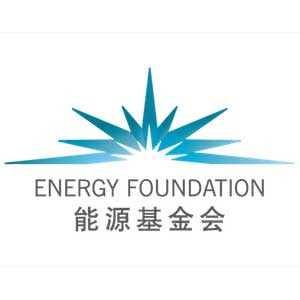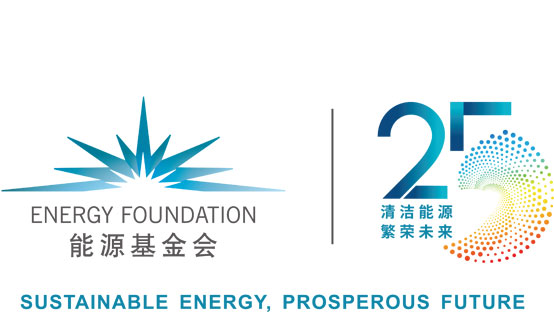The People-Oriented Approach in Promoting Air Quality in China
Since the beginning of the new century, China has enthusiastically promoted the concept of “ecological civilization,” which seeks to systematically expound the relationship between the environment and development of the economy and the society. The official exhortation “development for the people, by the people, and for the benefits of the people” most succinctly explained the nature of the country’s people-oriented development. The first key breakthrough in this area occurred in the combat against air pollution. After all, improving air quality is to protect the health of the people. And in order to improve air quality, we must rely on the combined efforts of the Chinese people who can all benefit from clean air.
June 5th of this year is the 48th World Environment Day; its focus is on air pollution. And the official theme in China is simply “beat air pollution.” The United Nations chose to host the global event in China. This is a clear recognition on the part of the international community of the fact that the host nation has been accelerating its transformation from a heavy polluter to a successful protector of the environment, thanks to the hard work of the government, enterprises, civil society organizations, and common citizens in the country. Since 2013, the Chinese government has established a top-down approach, issuing its Action Plan on Air Pollution and updating it with a new Three-Year Action Plan on Blue Sky. It sought to achieve its aim through various initiatives, the major one being concerned with optimization of industry, energy, transportation, and land use structures. Since then, the annual average concentration of fine particulate matter (PM2.5) in major cities nationwide fell below 40ug/m3 in 2018, down 30% from 2013, and fell to 51ug/m3 in Beijing, a drop of 43% during the same period. Many Chinese enterprises have enhanced their environmental awareness and taken concrete actions in this area. Over 80% of thermal power enterprises have completed refitting for ultra-low emissions. In the transportation sector, there has been an accelerated shift from road to railway with regard to the transportation of bulk materials such as coal, with freight volume increasing by 9.1% year-on-year. The public in general has also been enthusiastic, with rural residents replacing more than 10 million old heating units with clean energy units. To date, 20 million motor vehicles with high emissions have been taken off the road ahead of schedule. At the same time, a large number of domestic and foreign NGOs have become an important force providing support to China’s efforts on air pollution prevention and control. In short, the whole society has joined forces in order to win this Battle of Blue Sky.
Although these results are no doubt positive and significant, vast challenges still lie ahead for the country. At present, the number of days that can be counted as good in terms of comprehensive standard on urban air quality is still quite small. Over 50% of cities above the prefecture level have excessive concentration of PM2.5 on an annual basis. The proportion of cities with excessive ozone (O3) has also increased rapidly. Nitrogen dioxide (NO2) in large cities is over the limit of relevant standards. Safe to say, the road to “clean air” is still long and arduous.
In order for people to enjoy safer, healthier, and even world-leading air quality, China needs to continue to step up its game in combating air pollution.
First of all, in view of the current air pollution problem, we should accelerate the implementation of air quality management plan for coordinated control over multi-pollutants, focusing on PM2.5 and O3.
Conduct more research and analysis on the generation, conversion, and transmission of ozone pollution, improve emission inventories, and propose a timetable and a roadmap for O3 and PM2.5 to meet targets in coordination;
Improve the emission inventory of volatile organic compounds, and strictly control emissions from industries that rely on solvent, such as transportation, oil refining and petrochemical manufacturing, furniture making, and printing;
To use the precursor nitrogen oxides (NOx) as an important indicator for controlling combustion of fossil energy, it is necessary to control emissions as well as the sources of NOx production. So we need to enhance control over the total consumption of coal and oil and better promote renewable energy; accelerate establishment of zero-emission transportation systems for passenger and freight; fully implement ultra-low emission policy in key industries such as steel making and building material manufacturing.
Second, we should focus on the country’s long-term goal of achieving world-class air quality, and gradually improve the air quality management system with a scientific and rational approach.
In terms of target setting, it is necessary to study and identify those targets on air quality improvement that are compatible with China’s economic and social development goals in the medium to long term, so as to help China meet targets on air quality by 2030, and to reach WHO’s guideline standards by 2050.
With regard to standard setting, implementation assessment should be carried out regularly, and standards on ambient air quality should be updated according to the latest research on air quality and human health, in order to maximize protection for public health.
As for evaluation, it is necessary to adjust and optimize adopted methods in a timely manner, and change from focusing on averages of multi-station data in any one area to looking at maximum concentration data from a single station, to ensure that the largest number of areas reaches air quality standard for the protection of public health.
In terms of governance concept, we should bring our mind to the relatively low income of the people in underdeveloped areas and the pressure they face from pollution reduction tasks such as ending the usage of disaggregated coal and obsolete motor vehicles. Supports in the form of funds and preferential policies should be provided to them.
Finally, we should implement a long-term strategy for coordinated management of air quality and climate change so as to promote economic prosperity in China and climate security globally.
China should be committed to a grand organization of the country’s goals, planning, institutions, and policies. Based on conclusions of institutionalized cost-benefit analysis of measures, it should accelerate policy implementation with regard to renewable energy, zero-emission transportation, improvement in energy efficiency, and other coordinated measures of emission reduction; establish a coordination mechanism between monitoring and emission standards, emission inventories, and emission permits as part of an management system, and environmental taxes, emissions trading, and investment and financing as part of an system of economic policies.
The importance of international cooperation in collaborative management cannot be overstated. China should actively exchange and disseminate experiences on atmospheric governance and climate change management, and promote global air quality and carbon emission improvements in the implementation of the “Belt and Road Initiative” and the Paris Agreement.




